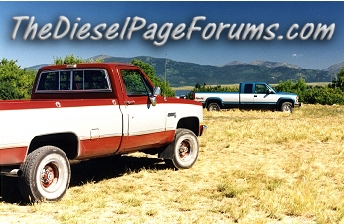Measured something today that was not what I expected.
So I am doing some more heat testing on a 4 cylinder IDI TD 87hp Kubota engine. Its a stationary piece of equipment. Today was too cool to really test for overall cooling capability but I can't wait on the weather and had to test some other functions so for information I measured top and bottom radiator hose and avg oil pan oil temperature. Procedure is to block thermostat open about 1/4 open so it can't shut but it can open farther then run and measure temps.
Top hose 147F, bottom radiator hose 134F, oil temperature 241F did not get EGT ambient was 46F. The oil temp was a surprise to see it so high in relation to ECT. And leads me to question if oil dissipates much heat into the block and then into coolant. Engine load varied probably from about 30 hp load to 60 hp with random cycling between the two loads and some time inbetween. The engine is set at fixed throttle position and load varies. Old mechanical injection type as in not common rail or electronic in any way.
Earlier in the week I was seeing 187F top hose 174 bottom hose and 246-255+ oil temps with 850 ish EGT before turbo with a much steadier load.
This engine does have a small coolant to oil heat exchanger and with lower hose at 134F I would have thought it would cool the oil pretty good. So I am not so sure what to think right now.
MAYBE the cool ECT kept the cylinder walls cool and minimized thermal expansion. The load was randomly cylical (pretty quick load and unload) which may have caused spikes in EGT and thus piston temps such that friction from hot piston and cool cylinder caused more heat for the oil ?????







 Reply With Quote
Reply With Quote





